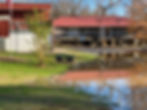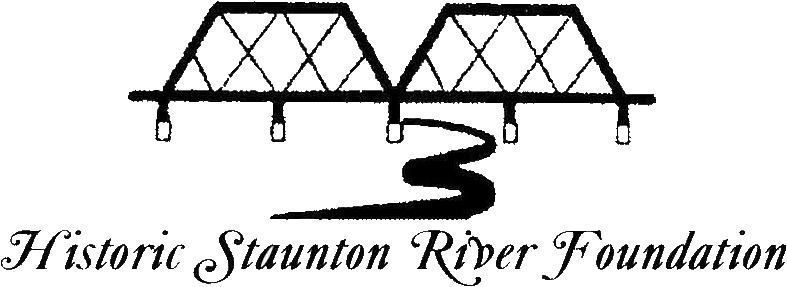
"The old families of Virginia will form connections with low people, and sink into the mass of overseers' sons and daughters".
- John Randolph of Roanoke














































The following is a transcript of B. L. Farinholt report written ot the Secretary of War and appeared in the Charlotte Gazette September 16, 1937.
BATTLE OF STAUNTON RIVER BRIDGE, JUNE 25, 1864
CAPTAIN FARINHOLT’S – CONFEDERATE REPORT
Hon. Secretary of War,
Richmond, Va.
Report of Capt. Benj. S. Farinholt, 53rd Va. Inf. – of Operations
June 25, 1864
General: I have the honor to make the following report of the engagement which took place on Saturday 25th of June:
I have regularly assigned to duty at the post (Staunton River Bridge) six companies of reserves, numbering in all 296 men.
On Thursday, the 23 inst, 10 p.m. I received a dispatch from General Lee, through you, that a large body of the enemy’s cavalry were moving in this direction; to make every possible preparation immediately. By the trains at 12 o’clock that night. I sent off orderlies with circulars, urging the citizens of Halifax, Charlotte and Mecklenburg to assemble for the defense of the bridge, and ordering all local companies to report immediately.
On Friday, the 24th, I had in addition to my usual details, nearly my entire battalion, together with what citizens and Negroes I could collect and impress, busily at work on the entrenchment on Saturday morning, 25th, about 10 o’clock, I had received citizens and soldiers, inclusive, 642 re-enforcements. Of these, about 150 were regulars, organized from different commands. My whole command numbering, from above statement, 938 men. My scouts and pickets, citizens mounted as cavalry, reported the enemy close in the in this vicinity at 12 P. M. and I was at this time and up to the hour of their arrival, busily engaged in constructing rifle pits on the north side of the river. My cavalry, numbering 75 I had thrown out at the fords above and below, guarding against and to warn me of flank movement.
The enemy appeared in my front at 3:45 P.M. and immediately on their approach began to place their artillery in position. I opened on them with a three inch rifled gun (artillery consisting of this gun with two smooth bore 12 pounders and three iron six pounders) but the shot, from some inexplicable defect in the gun, fell short of the mark. The enemy then approaching to within a mile of my main redoubt and taking possessing of a very commanding hill, immediately opened with rifled Parrots and 12 pounder Napoleons, and very soon getting exact range of my battery threw their shell and canister into my artillerymen and their supports with great precision. At the same time they formed two regiments of dismounted cavalry on each side of the railroad in line of battle, with a thick line of skirmishers in front, and advanced toward the mouth of the bridge, my artillery playing vigorously on them all the while. At this juncture, I had but four small companies on the north side of the river (one on each side of the bridge).
I immediately threw notwithstanding the enemy were across company of re-enforcements shelling the bridge furiously and a strong line of sharp shooters directing their fire on it, the difficulty of crossing being increased by not having been able to procure planks to floor it, and the only mode of crossing being upon the ties. I had, in this manner crossed over 500 men and placed them in position, when the enemy’ skirmishers, having fallen in with the line of battle, and the whole line, arriving within close range of my rifle pits (which I had almost entirely masked) were scattered before a withering fire from my infantry, which was totally unexpected.
Falling back several hundred yards, they reformed, and adding re-enforcements, which were rapidly sent forward, they again advanced to within 100 yards of my rifle pits. And were again broken in confusion. This repeated four times, each time with the same result, and the whole time my artillery firing on them with considerable precision and effect.
At nightfall the enemy’s skirmishers were within 150 yards of mine, and desultory skirmishing was kept up until 12 o’clock, when I discovered the enemy withdrawing from my front, and as soon as it was light, I opened with my artillery on the rear of their line, then crossing Little Roanoke, causing them to retire from the road to the woods and to have great difficulty in getting off.
At daylight I advanced my line of skirmishers half a mile, and discovered that the enemy had left quite a number of their dead on the field. In this advance, eight prisoners were captured. At 8 o’clock the enemy had entirely disappeared from my front; not, however, before they had replied quite briskly to my artillery for half an hour. I afterwards ascertained that the enemy’s loss was at least 250 men; most probably 300 in killed and prisoners. Of the dead left on the field, I buried 42, among them several officers. My loss was10 killed and24 wounded.
The inexperienced troops to whom we are indebted for this remarkable victory over the enemy deserved the gratitude of both the army and the people for the gallantry and coolness displayed by them in meeting with the resolution and unshaken firmness of veterans, the repeated charges of the enemy, so superior in numbers, equipage and artillery.
I desire to make special mention of Colonel Henry E. Coleman, Twelfth N. C. Regiment, Captain William. W. Frazer, Commanding Artillery, Captain R. H. Fitzgerald, Corps of engineers, Captain William C. Marshall, Stribling Artillery, whom I assigned to duty in most exposed places, and who proved to me by their chivalrous conduct, my confidence in their ability was not misplaced.
Colonel E. H. Coleman was at home wounded, but came forward and offered to take any position. I assigned him to one of the most important and responsible positions, when he held, through hotly engaged and pressed for four hours, when he was painfully wounded in the knee, until assured of the confidence of his men to defend the position.
Hoping, General, my report may merit your approval and my command receive due credit for defending against superior numbers so important a line of communication. I have the honor to be, with great respect,
Your obedient servant;
(Signed) B.L. Farinholt
Captain Commanding Post
Words: 1023
Submitter: Jacqueline Gray, Charlotte Court House, Virginia
Source: Charlotte Gazette – September 16, 1937
INDEX
BATTLE OF STAUNTON RIVER –
CAPTAIN FARINHOLT’S – CONFEDERATE REPORT
Coleman, Colonel E. H.
Coleman, Colonel Henry E.
Farinholt, Captain Benjamin S.
Fitzgerald, Captain R. H.
Frazer, Captain William W.
Marshall, Captain William C.
Staunton River Battlefield Historic Documents & Transcripts
